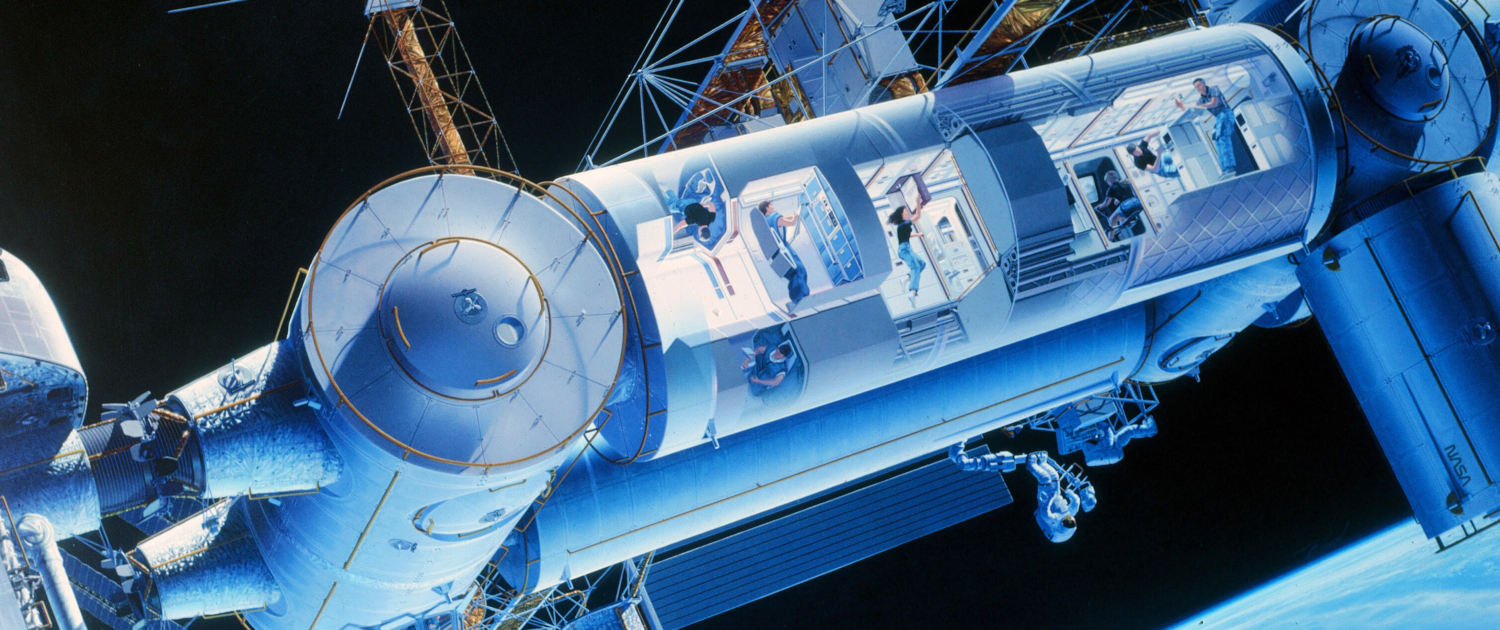Downloads
DOI:
https://doi.org/10.7480/spool.2021.2.5267Keywords:
Space architecture, space history, habitability design, critical design challenges, design consequences, in-situ-resources, design innovation, creativityAbstract
Extra-terrestrial living and working environments are characterized by significant challenges in logistics, environmental demands, engineering, social and psychological issues, to name a few. Everything is limited: physical volume, air, water, power, and medicine … everything, even people, and therefore all is treated as valuable resource. This situation is complicated by the end product being the result of balancing many competing interests. The relationship between humans, space, and technology is forced, as well as a dynamic process. Although mathematical models for complex systems exist, long-term effects are hard to predict, and even more so to calculate. Even if we had technological solutions for all hazards and threats, there would still be the question of how these subsystems work together, how they are perceived, and if they are accepted by the inhabitants. Habitability design is vital to the success of future space exploration. Research into the dynamic system of ‘living together in an isolated and extreme environment for a long time’ does not lead to a single common solution. Instead, designers are left trying to translate differing first-person astronaut accounts into a solution bound by the constraints of physics, schedule, and cost. The early days of human spaceflight were all about discovery. Trying to replace conjecture with experience and fact. For example, the Moon was thought to have meters of soft dust that would swallow landing spacecraft. We have built on the successes and failures, but some achievements have also been forgotten. Today, we use these lessons to create effective designs for ‘living together in the isolated and extreme environment (ICE)’ of space. Following are descriptions of historical and newer examples of possible solutions that show what can be achieved when the demanding constraints of space inspire creative solutions for combining human needs with technological possibilities.
How to Cite
Published
Issue
Section
Categories
License
Copyright (c) 2022 Sandra Häuplik-Meusburger, Brand Griffin

This work is licensed under a Creative Commons Attribution 4.0 International License.
Plaudit
References
Burgess, C. (2011). Selecting the Mercury seven: The search for America’s first astronauts. Springer in association with Praxis Pub.
Clervoy, Jean-François. (2009). Transcript not published [Unpublished interview]. Sandra Häuplik-Meusburger. Paris, France, June 2009.
Cohen, M., Flynn, M., Levy, F., Mancinelli, R., Matossian, R., Miller, J., & Parodi, J. (2012). Water Walls Life Support Architecture: 2012 NIAC Phase 1 Final Report. https://www.nasa.gov/sites/default/files/atoms/files/niac_2012_phasei_flynn_waterwallsarchitecture_tagged.pdf
Compton, W. D., & Benson, C. D. (1983). Living and Working in Space, A History of Skylab. National Aeronautics and Space Administration.
Flynn, M. T., Cohen, M., Matossian, R. L., Gormly, S., Mancinelli, R., Miller, J., Parodi, J., & Grossi, E. (2019). Water Walls Architecture: Massively Redundant and Highly Reliable Life Support for Long Duration Exploration Missions. https://ntrs.nasa.gov/citations/20190001191
Griffin, B. N., Lewin, J. L., & Louviere, A. J. (1978). The influence of zero-G and acceleration on the human factors of spacecraft design. JSC-14581, NASA-JSC.
Griffin B. (2010). Lunar Surface Airlocks. In A.S. Howe, B. Sherwood (Eds.) Out of This World: The New Field of Space Architecture, Reston, Virginia, USA, AIAA
Griffin, B. N., Smitherman, D. V., & Howe, S. A. (2013). Internal layout for a cis-lunar habitat. In AIAA SPACE 2013 Conference and Exposition (p. 5433).
Häuplik-Meusburger, S. (2011). Architecture for Astronauts: An Activity-based Approach (Springer Praxis Books). Springer.
Haeuplik-Meusburger S. and Bishop S. (2021). Space Habitats and Habitability: Designing for Isolated and Confined Environments on Earth and in Space. Springer Nature .
Haeuplik-Meusburger, S., & Ozdemir, K. (2012). Deployable lunar habitation design. In Moon (pp. 469-502). Springer, Berlin, Heidelberg.
Kitmacher, G. H. (2002). Design of the Space Station Habitable Modules. 53rd International Astronautical Congress, Houston, Texas. IAC-02-IAA.8.2.04.pdf
Mount, F. E. (2002). Habitability: an Evaluation. In H. W. Lane, R. L. Sauer, D. L. Feeback (Eds.), Isolation: NASA Experiments in Closed-environment Living: Advanced Human Life Support Enclosed System Final Report. American Astronautical Society.
NASA [Bull.7]. (1974). Skylab Experience Bulletin No. 7: An Overview of IVA Personal Restraint Systems. Lyndon B. Johnson Space Center. JSC-09541.
NASA [Bull.10]. (1974). Skylab Experience Bulletin No. 10: Body Restraint Systems. Lyndon B. Johnson Space Center, JSC-09544.
NASA [Debriefing A12]. (1969). Apollo 12 – Technical Crew Debriefing. Manned Spacecraft Center, 1969.
NASA [Dust Management]. (2006). The Apollo Experience Lessons Learned for Constellation Lunar Dust Management. Houston, Texas, US : Sandra A. Wagner, Johnson Space Center, 2006. NASA/TP-2006-213726
NASA [MSIS]. (1995). Man-Systems Integration Standards (MSIS) (Revision B ed., Vol. 1). NASA. NASA-STD-3000.
NASA [SpaceWeather]. (2020). NASA Space Weather History. http://spaceweatherlivinghistory.org/timeline/31
Riley, C., Copp, D., & Davidson, N. (Directors). (2008-2009). Moon Machines [Documentary] Science Channel.
Schmitt, H. (2009). Transcript not published [Unpublished interview.] Sandra Haeuplik-Meusburger. Vienna, Austria, 2009.
Wright, M., Jaques B. (2002). A Brief History of the Lunar Roving Vehicle. https://www.hq.nasa.gov/alsj/MSFC-LRV.pdf



